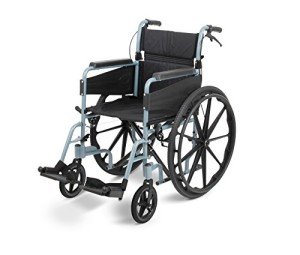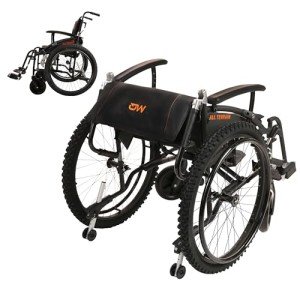Five Killer Quora Answers To How To Self Propel A Wheelchair
Donald
0
4
01.07 04:50
 How to Self Propeller a Wheelchair
How to Self Propeller a WheelchairLearning to self-propulse wheelchairs opens an entire new world of independence. However, it requires practice and proper body position to master this.
Proper body positioning involves precise grip and pushing technique. This article will concentrate on these skills as well as other aspects of wheelchair propelling.
Hand Positioning
Properly pushing a wheelchair using the hands is an important element of self propelling. It is recommended to begin with precision and work your way up to speed. Squatting while pushing can improve the stability and comfort of users, especially those with upper body restrictions. Hands should be set to match the speed of the wheel and push with both hands, not wrapping the thumbs around the hand-rims. This is a common mistake, which reduces effectiveness and adds more force per stroke.
The recovery path of the hands should be in a comfortable pendular pattern beneath the hand-rims following each propelling cycle, to avoid contact with the rear wheels (a "semi-circular" recovery pattern). This reduces shoulder strain as well as limiting the number of strokes and the duration of each stroke to an absolute minimum.
For more challenging surfaces it what is self propelled wheelchair recommended that wheelchair users utilize long strokes that allow for a full recovery (like the hand positioning on a clock). This can reduce shoulder injuries due to repeated motion, but can increase loading at the shoulders during each cycle.
Using the same position for both propelling and braking can help reduce shoulder injury. If the wheelchair user can maintain a consistent pace for both actions, they'll be able to better manage the forces and adapt to differences in the terrain.
On slick or muddy surfaces it is important to lean slightly forward while propelling to prevent the wheels from sinking into the ground and tipping. It is worth trying different extents of trunk lean to determine the best balance between too little and too much lean. Regular practice will boost your confidence and ability. Wheelchair propulsion is a vital skill for those with mobility challenges and can open up a whole world of independence. With the right technique, the right equipment and some education anyone can be taught to operate their manual wheelchair with ease! This entry was posted in News and tagged how to use a wheelchair, how to self propel a wheelchair (https://telegra.ph/Why-Nobody-Cares-About-Lightweight-Self-Propelled-Wheelchairs-12-28) to.
Foot Positioning
It is crucial to ensure that the user's feet are positioned correctly for stability. It's not always the best self propelled wheelchair uk choice when the wheelchair has feet that are not close enough, as this makes it difficult to self propelled all terrain wheelchair-propel. Sometimes, it is essential for the wheelchair to have this type of configuration to navigate difficult terrain. If the user is climbing an incline or perhaps over some of the beautiful National Parks and beaches in the United States, the wheelchair must have wheels that can push them over to allow the user to move forward. This is accomplished by having the front wheels placed as shown in the image below.
When the person is equipped with this system, they can simply grasp the rims of the wheels and push them together to advance. This is a slow and difficult method that requires a lot of upper body strength.
It is also crucial for the customer to be able to do wheelies, so that they can get over obstacles, such as curbs or other people. In this position, the user will place their left foot on top of their right so that they can lift themselves up and over the obstacle. The user will then move their right leg upwards and over the obstacle while pushing with their left hand. This is known as a crab walk, and it can be an effective method to maneuver a wheelchair through some of our more challenging terrain.
Self propelled wheelchairs, or manual chairs as they're often referred to they are a great option for many injured and disabled people who wish to be able to move around without having to rely on someone else for help. They are compact, lightweight folding self propelled wheelchair and foldable so they require less space in the home than other mobility aids. By using accessories like the E-Motion, they can be converted into powerchairs, allowing the user freedom to use their chair, and the additional benefit of electric assistance when needed.
Braking
Self-propulsion in wheelchairs is a crucial ability for those with mobility issues. It allows them to maneuver various types of terrains and situations independently. It also helps to build strength in their shoulders and upper arms.
The user should push down on one side of the hand rim and pull up the opposite side to push the wheelchair forward. The push-pull motion creates momentum, which propels the wheelchair in the direction that is desired. The speed at which the wheelchair is propelled can be altered by applying more or less pressure on the rims, or by using hand brakes if they are fitted with them.
Ideally, the cycle should last three hours or more. This decreases the time that the shoulder is under load which reduces the chance of injury due to repetitive strain. The speed at which the wheelchair is moved will also be affected by the width and size of the rear wheels. Smaller wheels are more comfortable to maneuver, whereas larger wheels require more effort. Wheelchairs could also be designed with camber which aligns the rear wheels with biomechanics, and increases lateral stability.
Wheelchair users looking to improve their technique for propelling should focus on achieving the correct body posture and practice in a safe environment such as an empty parking lot or hall. The aim should be to build long, slow strokes, allowing the wheelchair to move smoothly between strokes.
It's also crucial for the user to practice maneuvering while moving, such as weaving around objects or navigating turns. One method to do this is by weaving through cones and gradually transitioning into straight-line movement. The more practice a person does the more comfortable it is for them to master this.
Self-propelled wheelchairs can be a great device to allow people to keep active and doing the things they love. They offer independence and can be a great way to make friends, go to the movies, or even travel. You can regain or continue your independence by learning to use a chair properly.
Stability
A wheelchair user who lightweight self propelled folding wheelchair-props the chair can be independent and travel wherever they wish to go without having to rely on others. It requires an enormous amount of upper body strength, however it is necessary to push the wheels on flat surfaces or up small hills. This is why many wheelchair users choose to use an attendant controlled chair (also known by the name attendant propelled) such as the Action3 NG, or ErgoLite 2 and are driven.
Grasping the hand rims to move manually in a wheelchair is among the most important things to master to ensure optimal efficiency and ease. We find that many clients use this kind of wheelchair with their hand rims too far forward. This means they must extend further backwards in order to move their arms. This isn't biomechanically efficient and can cause strain on the shoulders over time.
The optimal hand-propulsion motion is a semi-circular pattern that sees the user alternate between the push phase and the recovery phase. The push phase requires the client to push down on the casters which is accomplished by many small strokes. This push pattern can help to strengthen the shoulder retractor muscles and ensure an appropriate range of motion.
When the recovery phase begins the client moves their hands back towards the wheels' rims until contact is made again with the casters. This allows for longer strokes, and reduces friction during the recovery phase. Some wheelchair users slide their hands down the wheels in a smooth arc during this phase, but this isn't as efficient and can cause wear on the rims.
 Another important aspect of stability is the position of the rear wheel to allow self-propulsion. If the wheel is set too far in the rear, a wheelchair can easily tip. This could make it difficult for them to maneuver around obstacles and it's not a wise choice for shoulder injuries. We need to assess a client's strength, range of motion, muscle tone, and orthopedic status during the seating assessment to determine the appropriate wheel position for them.
Another important aspect of stability is the position of the rear wheel to allow self-propulsion. If the wheel is set too far in the rear, a wheelchair can easily tip. This could make it difficult for them to maneuver around obstacles and it's not a wise choice for shoulder injuries. We need to assess a client's strength, range of motion, muscle tone, and orthopedic status during the seating assessment to determine the appropriate wheel position for them. 




